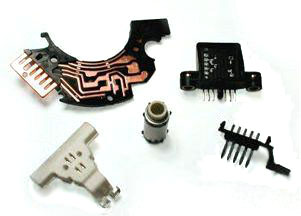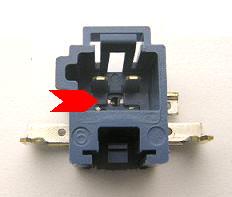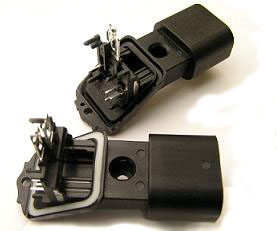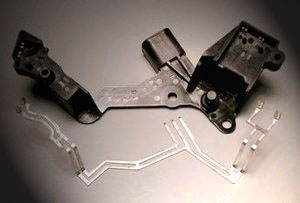

Insert Molding Injection Plastic
Metal Stampings Encapsulation Tooling
QS 9000 ISO 9002 In-Mold Circuit
Pre-mold Over-mold Perfing
Metal Stampings Encapsulation Tooling
QS 9000 ISO 9002 In-Mold Circuit
Pre-mold Over-mold Perfing

Insert Molding replaces metal and plastic assemblies, and components made
solely of plastic or metal. This unique manufacturing process combines metal
and plastic, ceramics, or multiple combinations of materials, components and
plastic into a single unit. The process uses engineering plastics for improved
wear resistance, tensile strength and weight reduction and uses metallic materials
for strength and conductivity. The result is a single heterogeneous composite that
always provides superior functional performance to any other manufacturing
alternative for products requiring high current applications.
| Single Encapsulation |

|
|
| This is the basic form of insert injection molding where a single shot of plastic encapsulates the insert and forms the molded product. | ||

|
Pre-Mold / Overmold | ||
|
This method is often used when the combination of inserts and final molded
component design may be too complicated for the single shot process. First, the
pre-mold is insert molded. Then a second tool is used to incorporate this pre-mold
as an insert to be over-molded to form the final molded part.
Occasionally, the pre-mold is designed to incorporate additional post assembled inserts as a secondary operation prior to being over-molded. This component is then over-molded in a second tool to form the final molded part. |

| Single Shot In-Mold Perfing |

|
|||
| Electrical circuits are designed in plated metal so that they may be joined during the stamping process using tie bars or lead frames. These connections are then blanked, severed and opened, or perfed, during the molding process to define the individual circuits in the mold tool prior to encapsulation. The advantage of this method is that it eliminates a post molding blanking die operation to separate the circuits. But, similar to post blanking, it has the disadvantage of leaving a water leakage path through the air-gap created by the perfing or "in-mold" blanking operation. | ||||

|
Shows perfing that separates the stampings. | |||
| Engineering / | Production / | Quality / | Contact Us / | Directions / | Information Form / | Links / | Employment |



